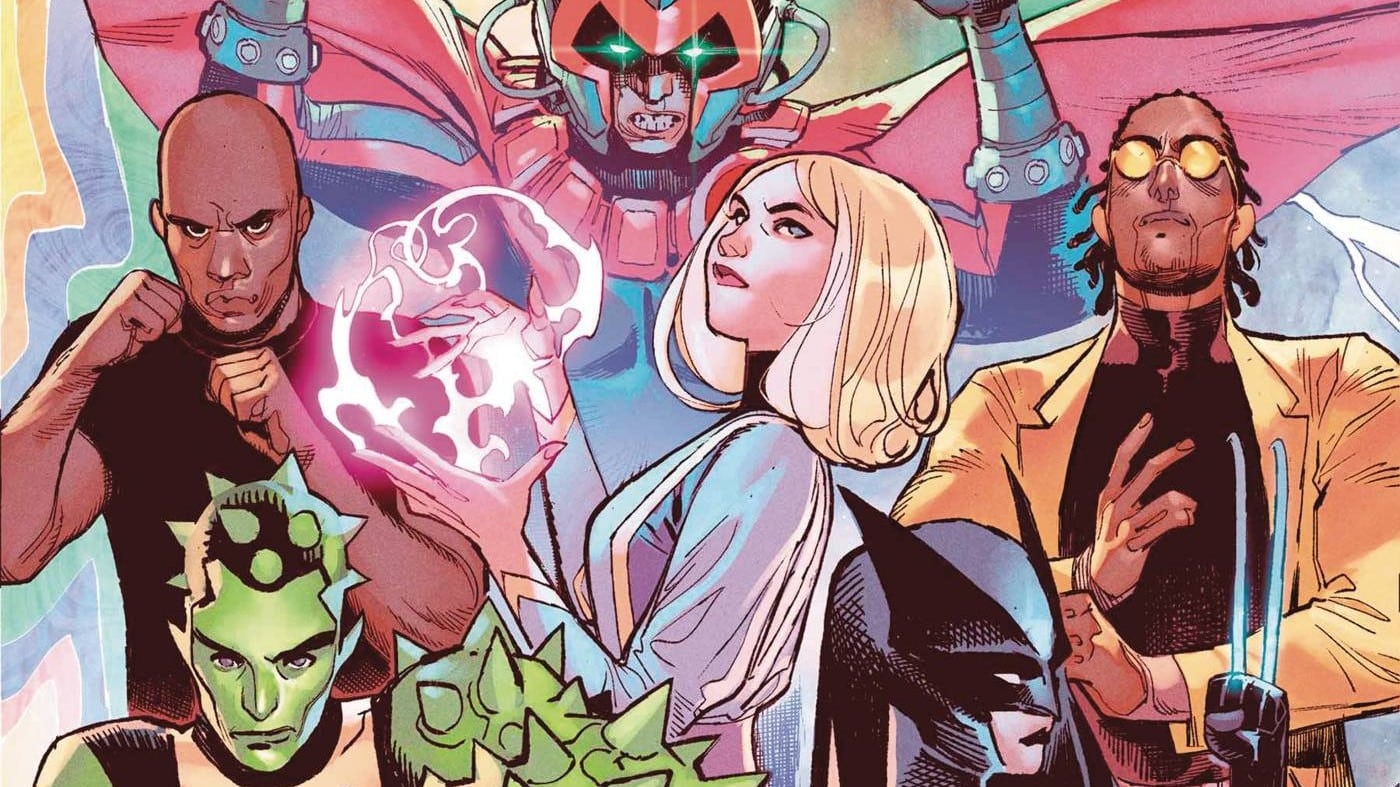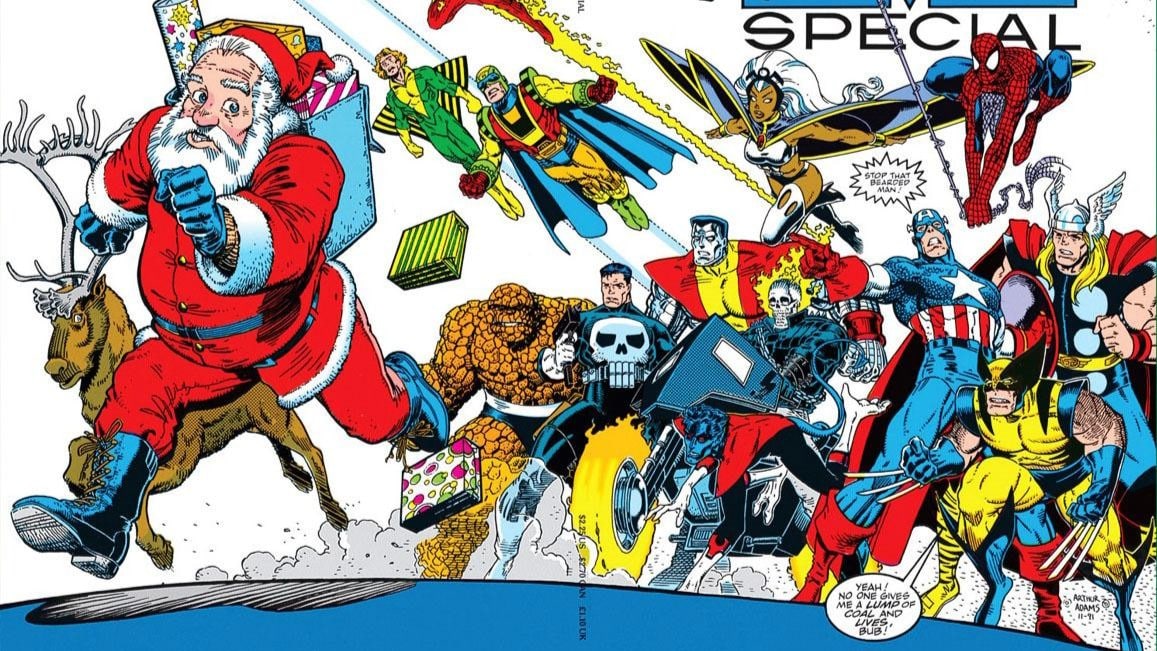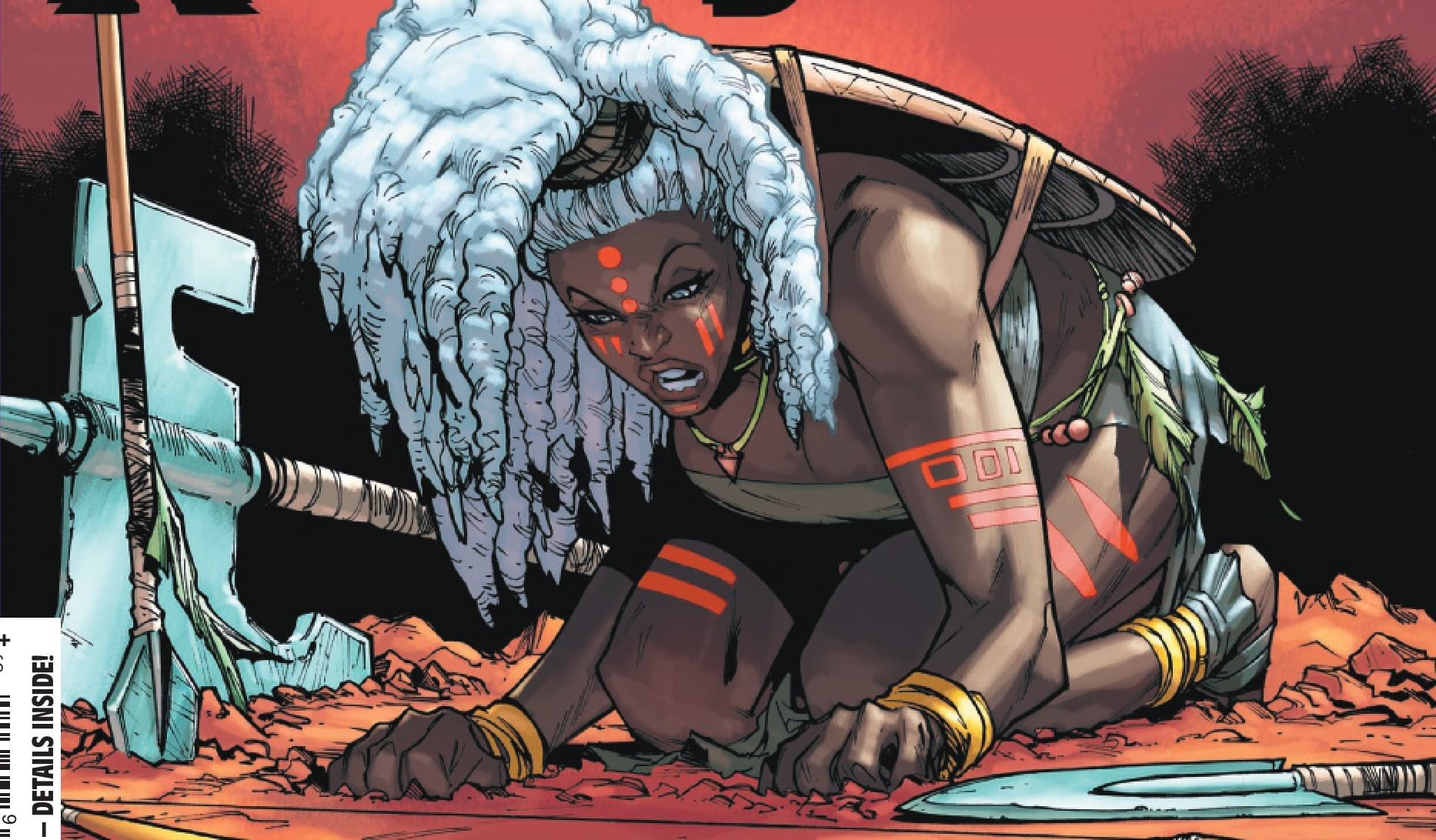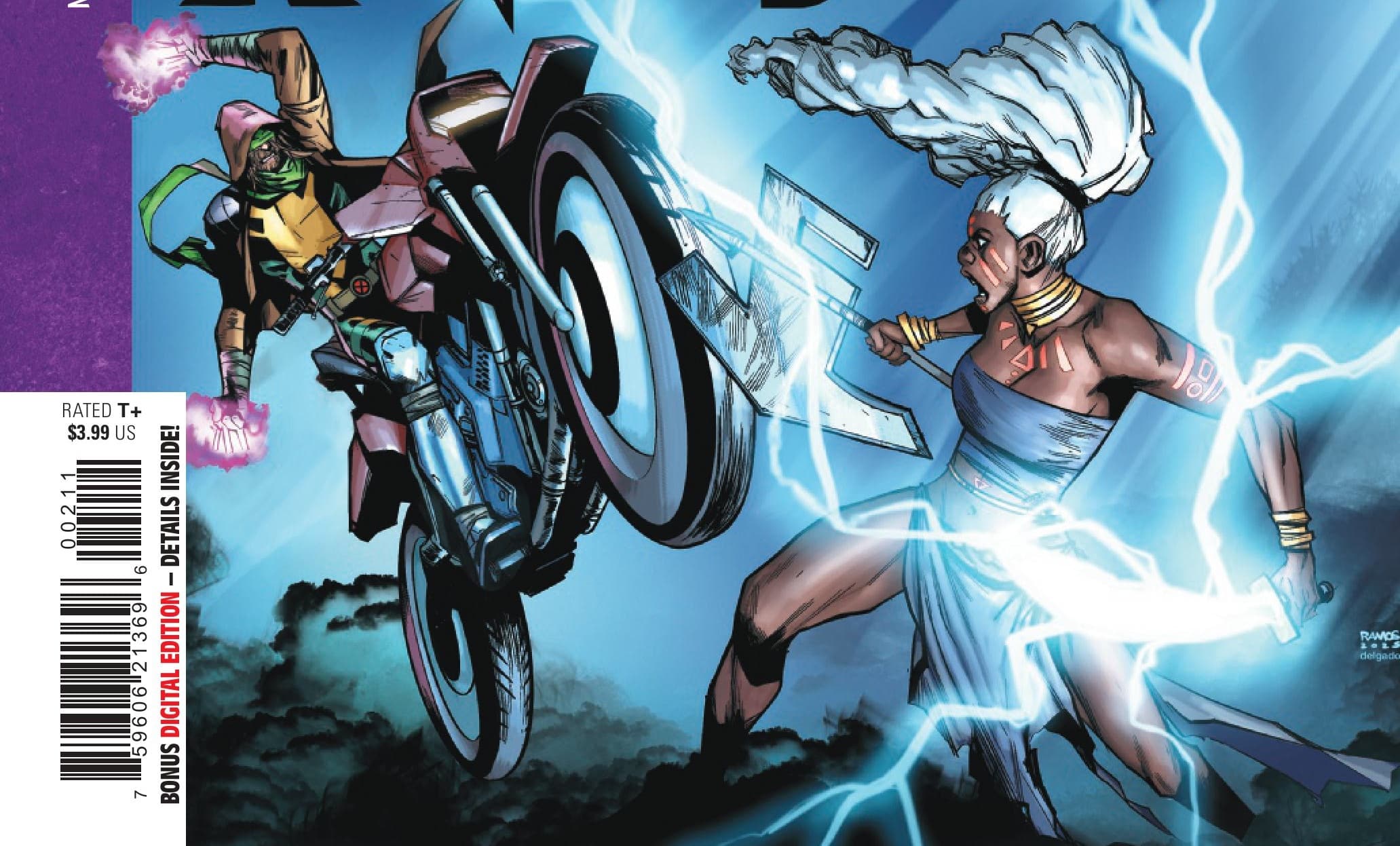Is New York City itself a kind of mutant? Can it give us all a model for mutant communities? How did Mojo take it over from Grand Central Station? Can he be defeated using the power of solidarity, or the solidarity of love, or the love of trains? Why is NYX ending? Find out which questions get answers in NYX #10, written by Jackson Lanzing and Collin Kelly, drawn by Francesco Mortarino, colored by Raúl Angulo and lettered by Joe Sabino.
Some series end because they’ve exhausted the arc that gave them birth. Others conclude because their central characters go on to bigger things, or quit the superhero game, or just can’t hold enough readers’ attention. Some hit a wall, creatively or commercially. Some end suddenly, like a car crash. Others get to end on their own terms, in ways that celebrate their premises, sometimes dramatically, sometimes in beautifully anticlimactic ways, like a wrap party, or an after party, or a ritual to honor what’s already gone, and to say that it might just return.
This final issue of NYX looks and feels like a ritual. And it looks lovely. In fact, it looks religious about its loveliness, opening and closing with panels that feel like stained-glass windows, or tarot cards, or maybe stained-glass Tarot, or some hybrid of stained glass, Rider-Waite-Smith style tarot, and 1980s wildstyle graffiti, in yellow, orange, pale green and pink, with white outlines and shallow shading around everything. Laura, marauding. Kiden, befriending (and getting kidnapped). Kamala’s misguided, pious, anti-mutant cousin Bilal, distributing handbills. The city: “The only main character around here is NYC.” Someone’s been reading the lesser works of N.K. Jemisin.
I’ll take second-tier Jemisin over most other writers’ best efforts. I’ll take Raúl Angulo’s colors throughout these pages — whose backgrounds and shadings consist almost entirely of secondary colors, pink, green, orange and purple, with blue and red almost nowhere except on costumes! — on almost anything. Get that man more work! And I’ll take this beautiful, earnest, uneven run of stories about youth and the NYX community over any number of save-the-world, action-packed melodramas.
Not that there’s no action here. The stained-glass wildstyle panels give us the run-up to today’s big problem: Mojo appears to have used his control over the comms-and-infrastructure-controlling mutant Local, plus a stolen Krakoan seed, to extend his vines and tentacles all over New York, beginning with its transit hub, Grand Central Station. Also he’s holding Kiden — Laura’s best friend from way back, now a member of NYX — as his captive. How to get her back? Can she be saved?
Of course she can, though a delightful meta-panel tells us the series cannot: Shadows of Sophie Cuckoo, Kamala Khan and David Alleyne behind a glass door labeled “X-Office” frame a narrative box and a dialogue balloon and a graffiti tag. The tag reads “NYX.” The narrative box says, “You hope to God it’s enough.” The dialogue balloon reads, “I’m not sure I understand the problem.” It’s like Lanzing and Kelly are saying, “What else could we have done?”
It’s a good question: What else could a series about mutant community and mutual aid for vulnerable young people do to keep going when the higher-ups have decided it has to go? In our universe, where comics live or die by preorders in specialty shops, who knows? In Laura and Kamala’s universe, Mojo’s an NYC problem that needs “a NYX solution.” That means calling on the community: friends, and friends of friends. “A phone tree,” as David says, reminding us he’s old enough to remember phones. And trees. Is he still a professor? He said he’d get fired after his public fight with Julian, but did he get fired? Where’s the AAUP when you need it?
David voice-calls NYX’s second-tier Gen X’ers (say that one five times fast), who agree to save the day at Mojo’s current HQ, on Park between 45th and 42nd, and when they all show, Mortarino and Angulo pull out all the stops on their visual organ: It’s a tentacular full-page Mojo special, like a banyan tree from Hell crossed with five evil squids and grinning like the malevolent media mogul he is. Julian wants to hit him, but Laura gets it: “He functions on belief. And right now he’s got all of it.”

Mojo functions on an attention economy, as well as on lies and threats of force. He’s powerful because he’s famous, and he’s famous because he’s popular, and he’s popular because he’s entertaining, and because people consider him (though only his fans prefer to consider him) powerful. When tyrants threaten violence, they can look powerful, but when they have to resort to violence again and again, they show how weak they can get. It’s the reverse of the scene in Peter Pan, the theatrical version, where Tinkerbell lives only if we believe. That’s why tyrants want to control, and to limit, communications. They take and hold their power — over our laws, and over our attention — only if we can’t speak with one another behind their backs, or if we agree to let them. If we trust one another instead, and organize, and make tyrants look small as we take them down, they lose.
That’s what this final battle wants to say. I’ll take it, heavy-handed as it may be, just as I’ll take the way this issue concludes: a final embrace between Laura and Kiden, and then another final embrace, and a callback to issue #2, where Laura, on her own, became the mutant-protecting loner Scratch. I’ll also take the narration, which — we have to realize near the end — comes from Local, also first seen in issue #2. Rather than die, or live on his own in his body, he appears to have merged with the city itself: “I can feel them in my sewers. Warm.” It’s quite the new urbanism, and it’s so beautiful that it develops its own purple art deco flourishes when the ritual stylized art from the first few pages comes back, as a treat, near the end.
I could watch Laura and Kiden enjoy their reunion all day, especially if Mortarino and Angulo get to draw it. Kamala, on the other hand, would probably rather not worry about her secret identity all day, every day. That’s why Sophie (“I do know something about lying to the people you love”) and David (“Have you thought about what keeping the secret has done to you?”) advise her to come out, quit being a Janus and embrace her once and future role as a Legacy. It’s good advice. Will she take it? And will that doggone X-office remember that the NYX community, and its clubhouse, exist?
Answer to the former: not quite yet. Answer to the latter: I sure hope so. If it does, I’ll be on the next train. To Grand Central.
X-traneous Thoughts
- When Sophie empowers the rest of the team to fight Mojo, they get pink butterfly mask-glows like Psylocke’s. Does anyone in-universe note the resemblance?
- Kamala says, coming out to Bilal — but not to her parents! — “your reaction is not my fault and it’s not my problem.” Put that on a bumper sticker of some sort.
- Remember Sobunar, the purple axolotl-ish mutant with the feathery antennae and the big, sweet, black eyes? Let’s see more of him. And of his other friends, who may or may not live in the reoccupied — and, I suspect, rent-stabilized — Morlock tunnels. They’ve got a good deal down there.
Buy NYX #10 here. (Disclaimer: As an Amazon Associate, ComicsXF may earn from qualifying purchases.)
Stephanie Burt is Professor of English at Harvard. Her podcast about superhero role playing games is Team-Up Moves, with Fiona Hopkins; her latest book of poems is We Are Mermaids. Her nose still hurts from that thing with the gate.






